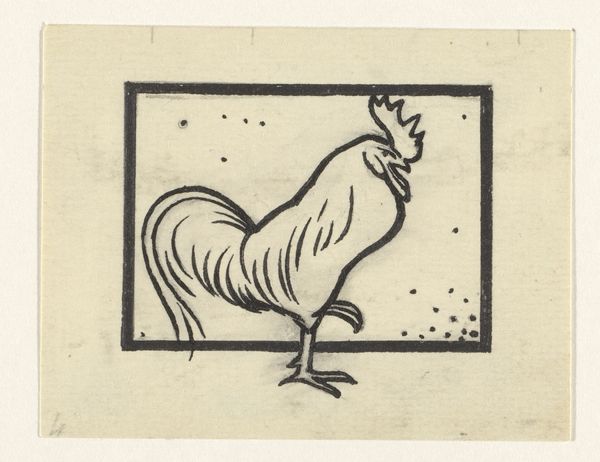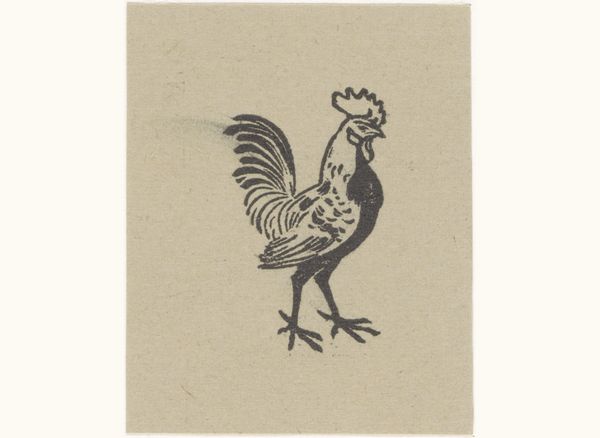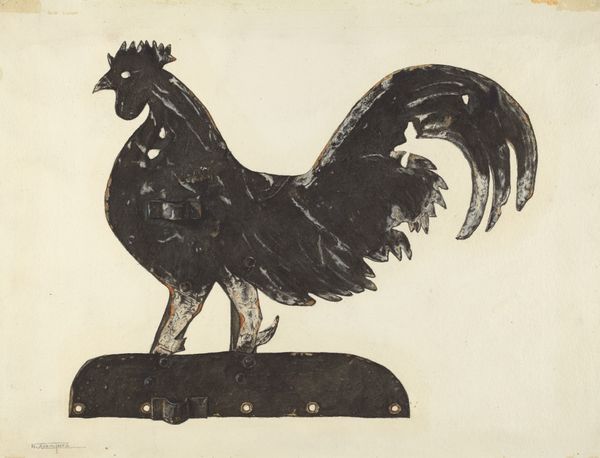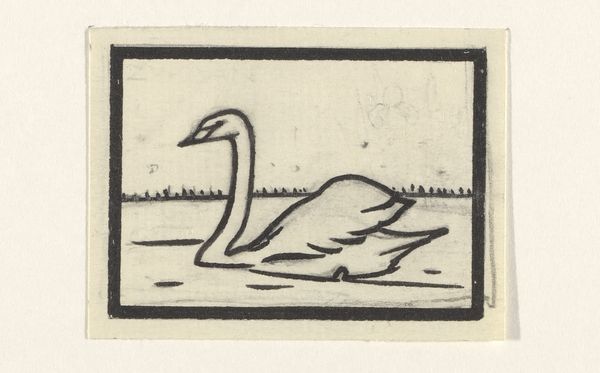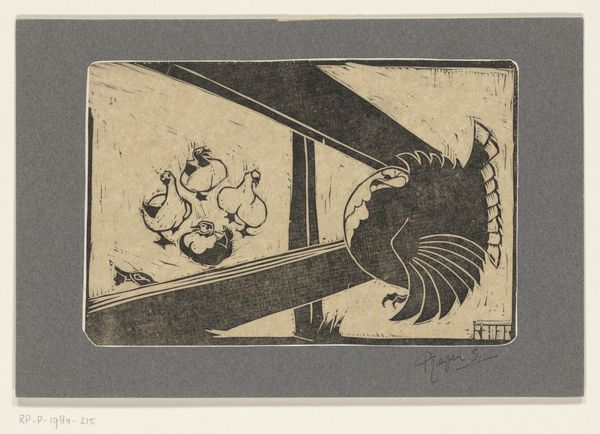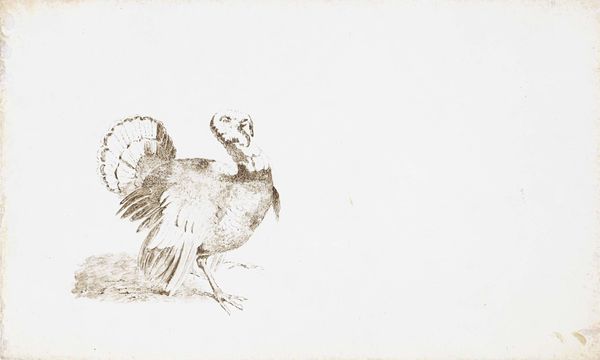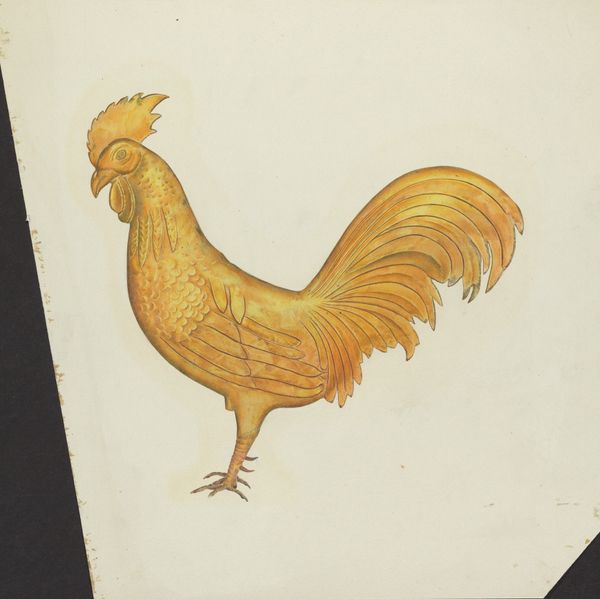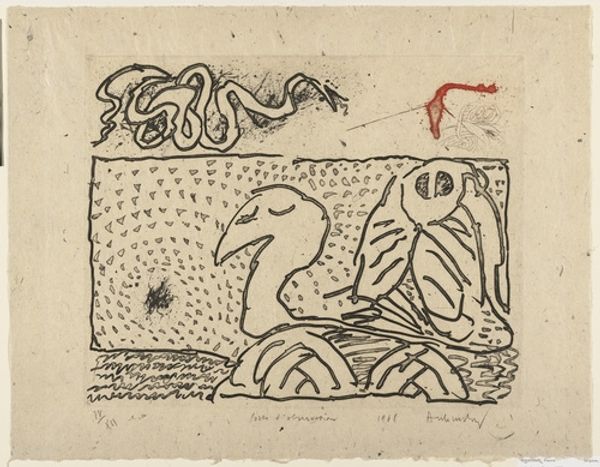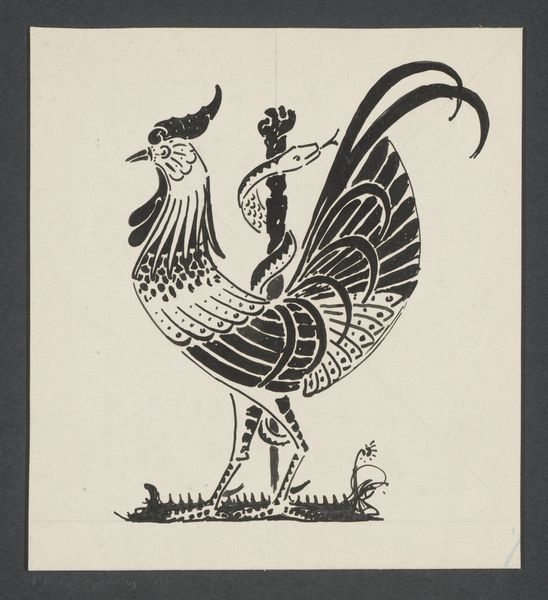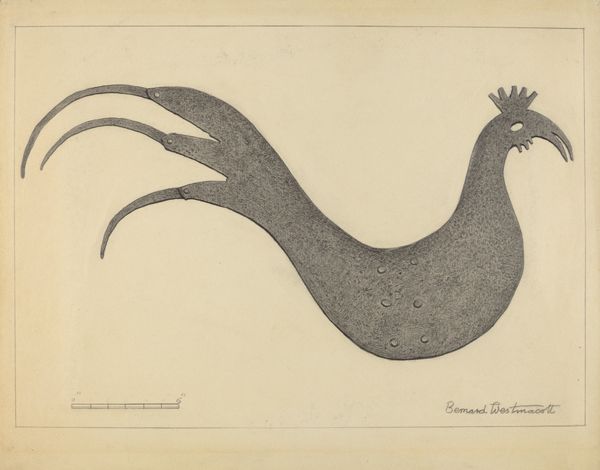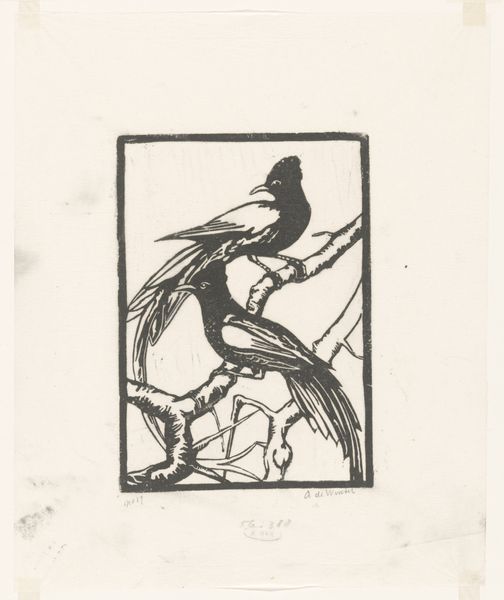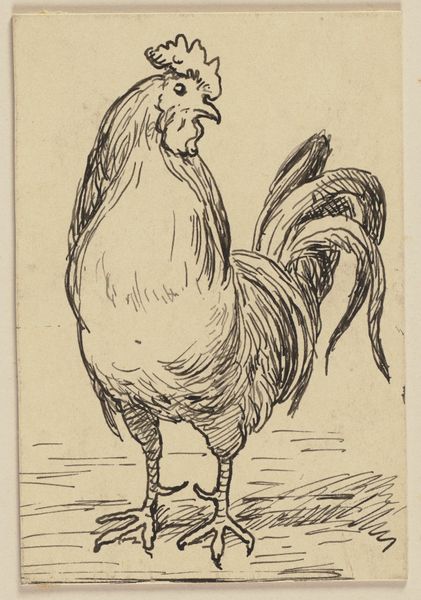
drawing, graphic-art, print, woodcut
#
drawing
#
graphic-art
#
art-nouveau
#
blue ink drawing
# print
#
figuration
#
woodcut
#
line
#
symbolism
Dimensions: height 85 mm, width 100 mm
Copyright: Rijks Museum: Open Domain
Curator: This graphic artwork, "Haan", which translates to "Rooster," is a woodcut print created by Julie de Graag between 1887 and 1924. The black ink on paper is striking in its simplicity. Editor: My first impression is that it's bolder than I anticipated. The high contrast between the stark black lines and the negative space evokes a certain raw energy, like a call to action. The subject’s proud stance seems like it carries symbolic weight. Curator: Exactly. De Graag's positioning within the Art Nouveau movement and her engagement with symbolism invite us to consider what the rooster represents. Traditionally, the rooster embodies vigilance, courage, and resurrection. What resonates most profoundly with you? Editor: The placement of the rooster within the frame makes me think about visibility and representation. The dots almost create a fragmented field. It's contained yet expansive, suggesting societal frameworks within which identities like gender, race, and even nationality are articulated and often challenged. Were such symbols typically gendered at this period? Curator: Typically, yes, but De Graag, as a woman artist, might have consciously or unconsciously infused her representation with alternative readings, complicating straightforward interpretations. The rooster can represent patriarchy but through its stylized presentation in her composition and choice of graphic medium, does the artist offer us a form of empowered critique? I am very curious as to whether she would explore similar topics through future artworks. Editor: That's compelling. It shifts the focus to the active role of the artist. The medium is significant here. The limitations inherent in woodcut - its sharp lines and potential for bold contrasts - mirrors the rigid categories that often define societal perceptions. This artwork's very materiality amplifies the potential message of social awareness. The image itself feels monumental. I’d be keen to examine its provenance further to understand its public reception at the time, and its positioning in various exhibits through time. Curator: I concur. Thinking about how De Graag negotiates these boundaries adds depth to our understanding of the image and her perspective as an artist working in a specific historical and socio-political environment. Editor: Indeed. I feel a sense of resolute questioning through this image.
Comments
No comments
Be the first to comment and join the conversation on the ultimate creative platform.
